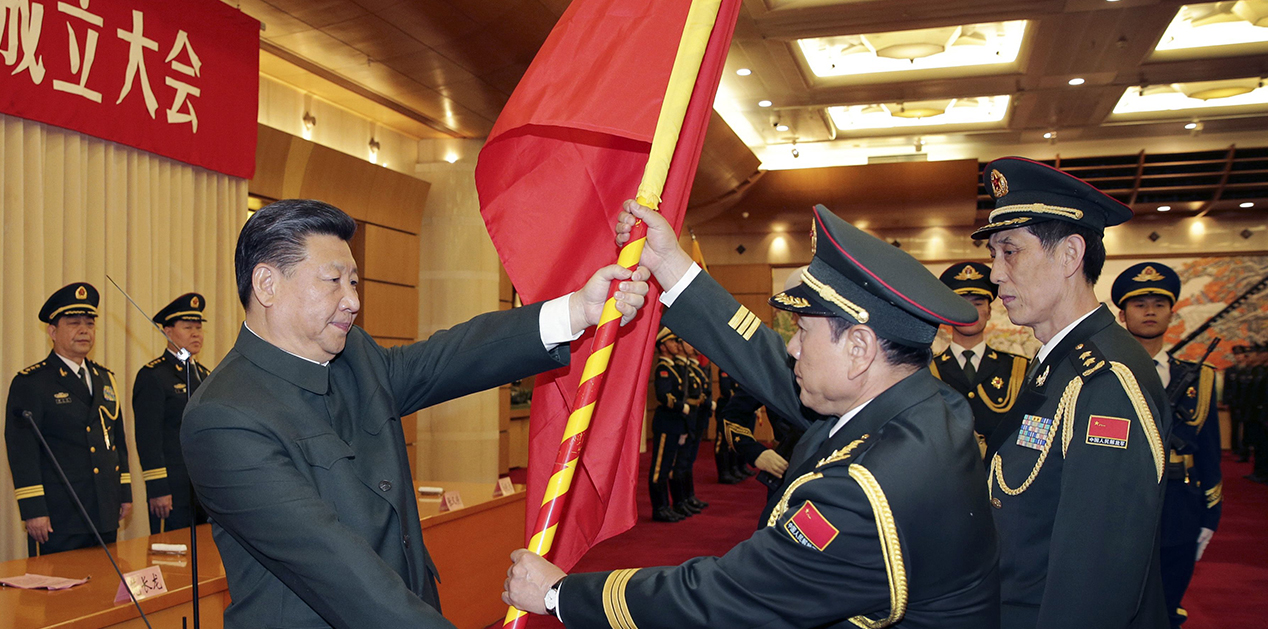
The Rise of China
(Summer 2021 Edition) — With the recent economic rise of China, there are those who predict — or fear — that China will be the next superpower, and will soon eclipse the United States. They point to the fact that China is a 5,000-year-old civilization that has always been, while so many other Western and world civilizations came and went. They fear that China’s rise entails the end of the United States as a power in the world and the end of Western civilization and values.
They are only half right. China is a rising 5,000-year-old civilization. But there is an alternative to the United States being eclipsed. If China can survive and thrive for 5,000 years, so can America. This is why, and how.
America faces a fork in the road. Either we can pursue a path that will enable our nation to survive and thrive for the next 5,000 years, or we can continue down a path that will inevitably cause us to go bust and likely cause a mutually fatal conflict with China. How do I know this?
I know this because, as a Chinese American, I know what is common knowledge among Chinese: the history of China’s survival for 5,000 years, through multiple comings and goings of various Western European and other civilizations and empires. Moreover, I know what is also common knowledge among Chinese — the fundamental strategic philosophy that enabled China to survive for those 5,000 years. Once one understands the fundamental strategic philosophy that led to such long term survival, one simply has to look at America’s objective position to realize that our country is in a perfect position to apply the same strategic philosophy — and also thrive and co-exist well into the next 5,000 years and beyond. Sound like a radical theory? Read on.

The Great Wall of China
Chinese and American Assets
How did China survive for all the centuries in which multiple Western civilizations — Greeks, Romans, Byzantines, British and other colonial empires — rose and fell? There are two major aspects to consider: China’s physical assets, and China’s strategic philosophy.
First let’s consider her physical assets. China has a large land mass, with good natural resources for food production and other needs, and reasonably defensible borders. Thus it was always able to support a large population and protect itself. It’s natural defenses included ocean to the east and south, and large desert, grasslands, and high mountains and plateau to the west. China’s weakest border was historically always to the north, thus the need for the Great Wall.
Let’s compare those physical assets to the United States. We also have a large land mass, with excellent natural resources and oceans to our east and west. Our borders, if anything, are even more easily defensible than China’s, since in Canada we have an assured ally to the north, and therefore do not have a vulnerable northern border. Mexico is a small country with a border much shorter than China’s northern border, and although there are issues, they are relatively minor compared to the threat of the ancient Mongols or Manchus who conquered China. Thus even the briefest glance at comparison shows that the US actually has somewhat superior physical assets to China. In addition, we have very deep and strong historical, cultural, economic, and political ties to Europe, another significant center of world power which is allied with us.
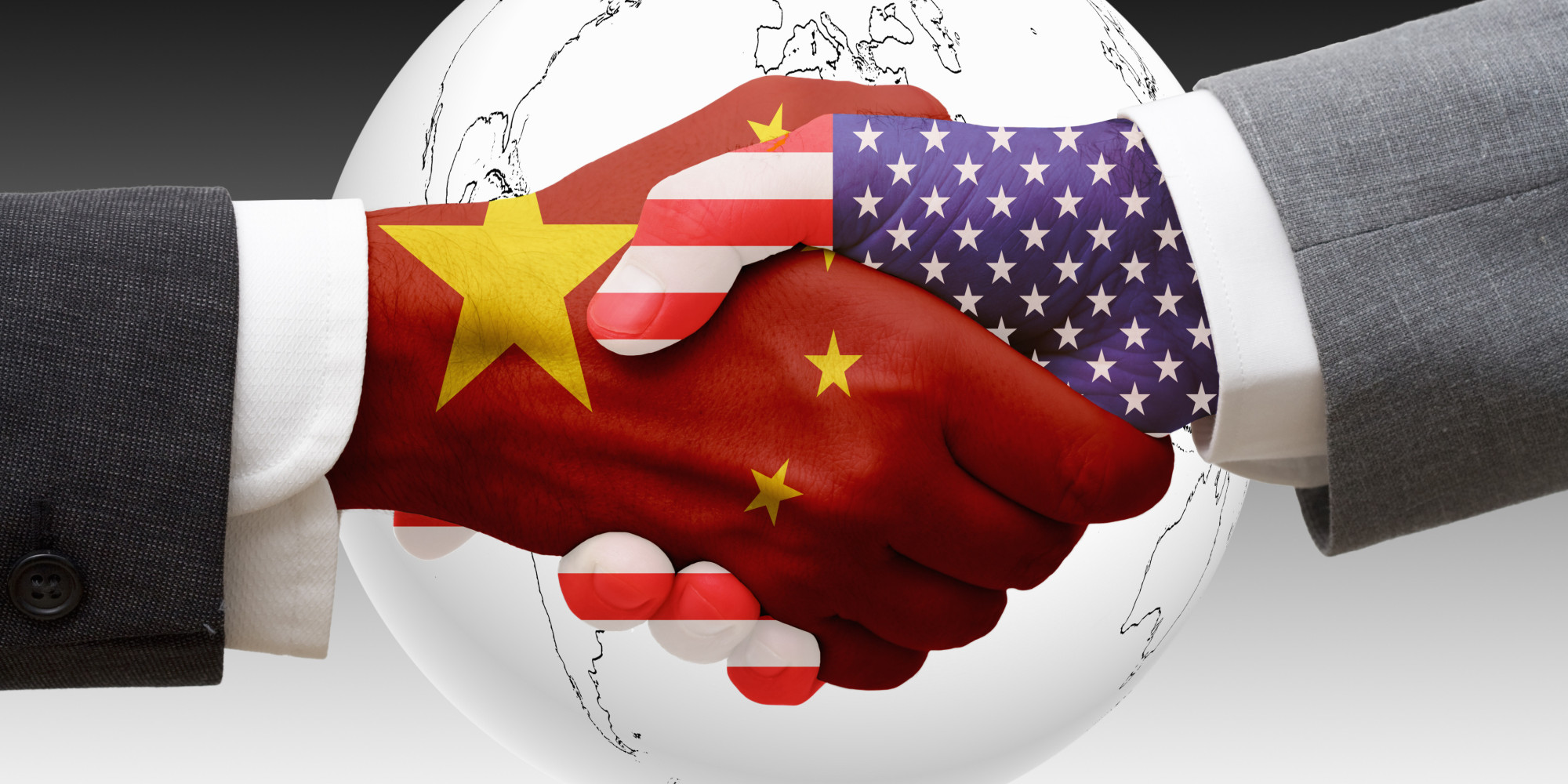
Comparing Strategic Philosophies
Now let’s compare the strategic philosophies of the United States and China.
First, China. China historically has always been the largest nation in East Asia, and due to its size and central location has generally been the dominant nation. During roughly 5,000 years of history, China has had a cycle of strong periods such as the Han and Tang dynasties, followed by a gradual decline and collapse, a period of chaos and warring states, and finally a new dynasty and a return to a strong period. During China’s strong periods, it usually expanded to what Han Chinese considered China’s natural borders. During weak periods, other nations or peoples often conquered parts or all of China, diminishing its size and borders.
China today is more or less at it’s strong size borders now, thus based on history no major expansion beyond this would be expected, with the sole exception of Taiwan. Taiwan rejoining the rest of China would augment China’s power but would not diminish the territory of any other Asian nations.
There is a border dispute with India, issues with Vietnam and several other nations around the South China Sea, and island disputes with Japan and the Philippines, but regardless of who might prevail in these disputes there likely would be no major change in any nations’ relative size or power. Historically, China has sometimes fought wars with neighbors on it’s immediate borders, but never pursued world conquest in the manner of the Mongols, the Romans, the Western powers during the colonial period, or other major imperial powers of history.
This lack of global imperial ambition was not due to a lack of means. China invented gunpowder over a thousand years ago, during the Song dynasty, a powerful period. This was over 400 years before anyone else, and the Chinese fully understood how to use it in war. Yet, unlike the European powers from about the 16th Century onward, China never set out to conquer the rest of the world. Consider that England, a small island nation, once truthfully said, “The sun never sets on the British Empire.”
Indeed, little England had conquered large parts of the world through the use of gunpowder, military skill, and organizational discipline. Yet China had all of these four centuries before the West, plus a large land mass, an advanced culture and technology, good natural resources, a quarter of the world’s population, and the 400 year monopoly on gunpowder. Why is it that China never had a period of world conquest?
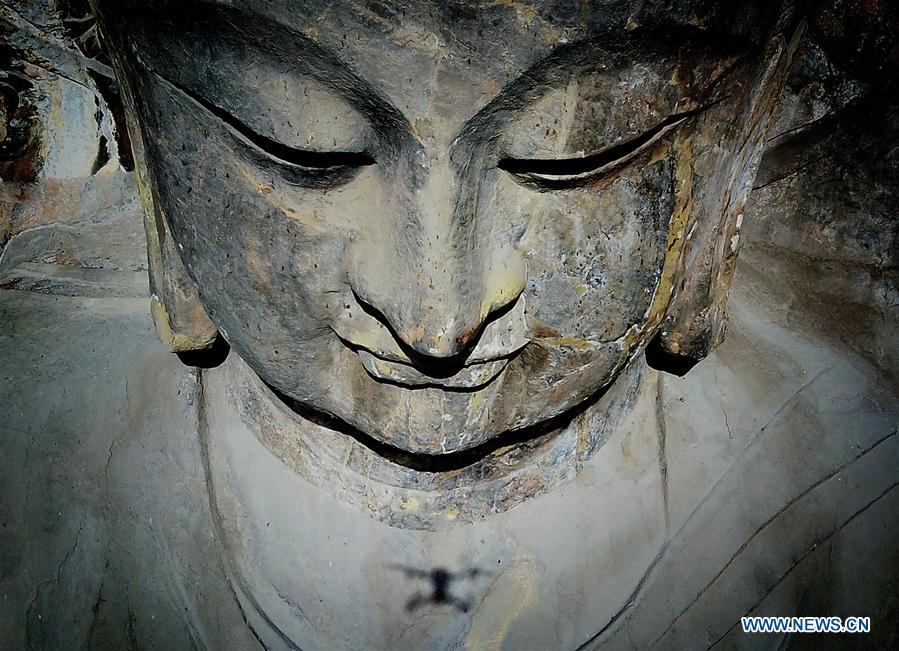
Longmen Grottoes Scenic Area in China’s Henan province.
The reason is simple but central to Chinese civilization — it’s strategic philosophy. While it is impossible to fully cover all of China’s 5,000 years of philosophical thought in one short article, there are two elementary concepts which are absolutely essential to understand if America is to survive and thrive as China has. These are very simple concepts, but they will provide at least a starting point for a journey of 5,000 years. From earliest times the Chinese have always had a fundamental philosophy of
(1) a long term view of life, and
(2) a balance of aspects in society and in life.
They viewed expanding beyond China’s natural borders as a critical overreach that would stretch Chinese supply lines, require endless wars and constant trouble with people native to other regions, create internal and external imbalance, and would in the long term result in the exhaustion, decline, and collapse of China. China was physically and emotionally self-sufficient; it had no need — material or psychological — to be a world empire. It was enough to be the central nation in Asia.
Indeed, true world history bears out the wisdom of the Chinese philosophy. In the 5,000 years that China has existed, the Greek, Roman, Byzantine, and various European empires have come and gone. China remains. Why? The reasons are many and complex, but China’s basic strategic philosophy remains central and premised on the same concepts: a long term view, and a balance of aspects. The Chinese did not overextend themselves by far flung wars of foreign conquest. Given their history and their observation of the West’s fate, the Chinese have no reason to change that now.
What the Chinese are likely to do is develop their cultural, political, and economic connections to the rest of the world. As they did with the ancient Silk Road, they will seek trade and prosperity, and political influence sufficient to promote stability and safety for Chinese commerce and security. The West is not in any military danger from China, but there may be a steady influx of Tai Chi teachers advocating health, calm, balance, and relaxation.
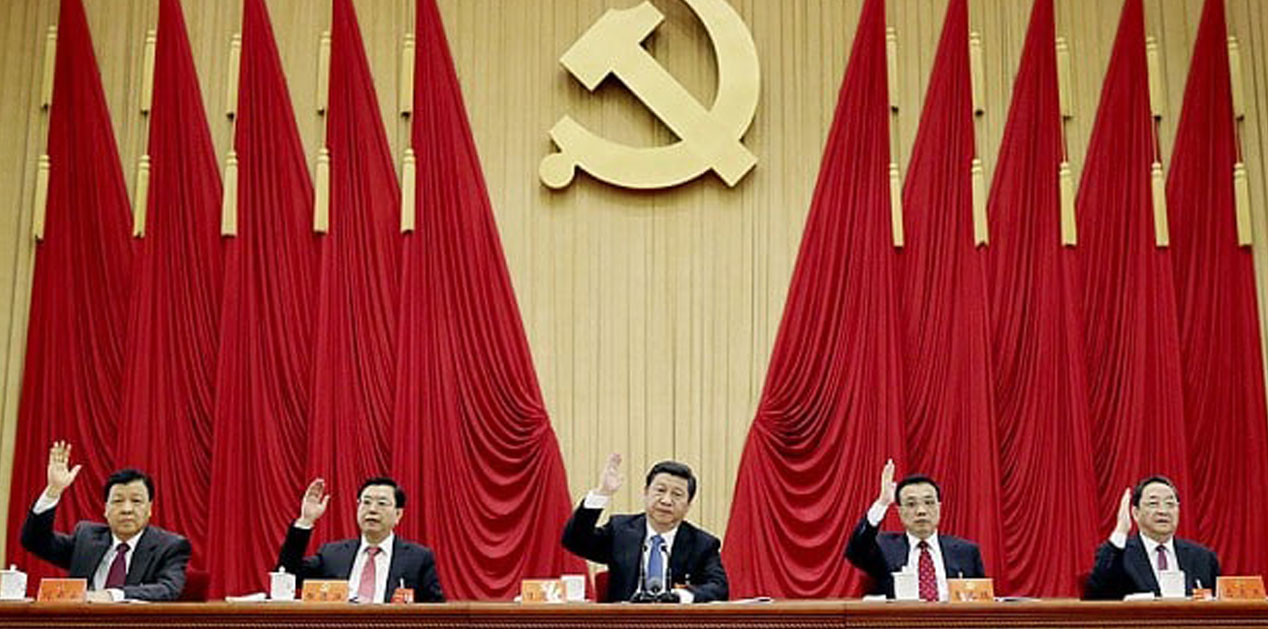
Central Paradigm: “Build and Hold”
Combining the fundamental concepts of a long term view and a balance of aspects forms China’s basic paradigm, which I will call “Build and Hold,” rather than the West’s paradigm of the “Zero Sum Game.” In strong periods, China would expand to a certain point that it considered it’s natural boundaries, then simply hold those boundaries.
This is the complete opposite of Western empires, which just kept expanding and trying to crush all competitors, thus overextending themselves and eventually collapsing. The Chinese understood that while this may gain them in the short term — a few hundred years — it would lose them in the long term — hundreds of years. For example, the Great Wall was built to keep invaders out, not to invade others.
By contrast, the western concept of “The Zero Sum Game” pits all against all, and is essentially a form of international Russian Roulette, a losers’ game. If a society’s central belief is that one is either a conqueror or victim and there are no other possible choices, then it is doomed to believe that it must conquer or somehow dominate all nations, an impossible task that will doom the society to endless conflict and in the end, defeat.
The West in general appears psychologically trapped in this “Zero Sum” paradigm because of its history. Throughout Western history going back to ancient times, Europe has been a region of small nations continually at war with each other. Consider the kingdoms of the Dark Ages warring against each other, or the various European powers of colonial times engaged in “The Great Game.”
Further back in history are the wars of the Roman, Greek, and Egyptian civilizations. Given this history, it’s understandable that the “hard nosed realists” in America believe that the whole world thinks like this, and that “If we don’t do it to them first, they will do it to us.” This is what drove Hillary Clinton to famously say, “I don’t want my grandchildren to live in a world dominated by the Chinese.” “Realists” like Clinton and many others in both parties can only conceive of the world in terms of domination and subjugation, not mutual and beneficial coexistence. This is in fact a “soft nosed” fantasy.
This “China fear” is exactly what led President Obama (with Hillary Clinton as Secretary of State) to declare a “Pivot to Asia,” surrounding China with 60% of our naval forces, and targeting China’s peaceful economic rise as a “threat” to America.
In 2018, the Trump administration’s National Defense Strategy named China and Russia “revisionist powers,” and Defense Secretary Jim Mattis said, “… great power competition, not terrorism, is now the primary focus of US national security.” Kiron Skinner, State Department Director of Policy Planning under Trump, said of China, “…it’s the first time that we will have a great power competitor that is not Caucasian.”
American strategists talk about “A clash of civilizations,” “Full Spectrum Dominance,” “Winnable Nuclear Wars,” and FBI Director Christopher Wray speaks of “Whole of Society” conflict. China interprets that as meaning the complete destruction of China, and prepares to defend itself. China built a system of air, island, and missile defenses (anti-access/area-denial — A2/AD) as a kind of “Coastal Great Wall,” so to speak.
As tensions increase, an arms race in Asia of both conventional and nuclear weapons and forces accelerates. The danger of a Cold War 2 suddenly exploding into a shooting, possibly even a nuclear war, increases day by day. A new Cold War with China is so dangerous that those “Zero Sum” folks who think this is a way for our nation to succeed or even survive are truly soft nosed fantasizers.
The truth is, the “Zero Sum Game” is not the only possible paradigm, and based on world (not just Western) history, not the most successful one. Again, China’s “Build and hold” strategy has lasted 5,000 years, and shows no signs of faltering now.
What we in the United States need are the central philosophical concepts to survive — which we can borrow from China’s history and philosophies. We will need to re-articulate them in an American context, for American audiences, and boil the central concepts down into their most basic elements in a way that Americans can relate to. What are the basic philosophical elements upon which China’s “Build and Hold” strategic philosophy is built on? Again, the two most fundamental concepts are (1) long term thinking, and (2) a balance of aspects. Let me say a little more about each of these aspects.
First, China’s history lends itself to long term thinking, simply because of the vast length of its existence. This culturally natural way of thinking is so pervasive that it seeps down into the fundamental way that even ordinary Chinese think. For example, in the 1950’s in America, Chinese Americans were looked down upon and stereotyped as speaking broken English, being physically small and weak, and stupid.
Such stereotypes are seen in movies of the time, where Chinese were depicted according to these stereotypes. When I was a child, “Ching-chong Chinaman” was a common taunt thrown at Chinese. But Chinese Americans continued to believe in ourselves, and the community as a whole taught all it’s members a simple strategy: work hard, get an education, and get ahead in the long run, no matter what we had to suffer in the short run.
First generation immigrant parents who may not have had good educations or spoken good English sacrificed all to put their kids through school. Kids followed exactly what we were taught: that to get a job and pay equal to a White American, we had to be twice or three times as good as them, and that should be our goal. In public, we should always behave well and project a good image of our community to counter the negative stereotypes of us. Our entire generation of Chinese Americans as well as new Chinese immigrant arrivals followed the long term strategy and succeeded so well, we inadvertently overdid it and created the “model minority” stereotype. This is long term thinking; to sacrifice in the present for gain in the future, even if that future is decades or generations away. It pervades all of Chinese society from the highest to the lowest levels.
The concept of the balance of aspects also deserves discussion, because it is the other fundamental concept — in addition to long term thinking — that is essential to long term survival and success. Without it, one has no guidance on what or how to think long term. China’s “build and hold” strategy proved successful over the course of thousands of years, but how did China develop this basic strategic philosophy?
Anyone with even the most elementary knowledge of Chinese history and culture knows that Confucianism, Buddhism, and Taoism were the three main philosophical influences in ancient China. Each in it’s own way preached moderation, “the middle way,” ie, a balance of aspects — in one’s personal and family life, in public affairs, and in affairs of state.
Students of Tai Chi and other Chinese martial arts are familiar with the concept of Yin and Yang; the existence of opposites — male/female, night/day, hard/soft, good/bad — as being inherent in the existence of everything in the universe, that one does not exist without the other, and that one’s goal should be to flow effortlessly between the opposites, maintaining a balance between the two, adjusting to circumstances, and working to harmonize the aspects with each other rather than having them destructively clash against each other.
Again, this is totally different from the Zero Sum game, which would dictate that it is always one against the other, and that survival can only be assured by one completely dominating or destroying the other. From the Chinese perspective, it is impossible to completely destroy one of a pair of opposites, so such a strategy inevitably dooms oneself. Wiping out an opposite would be as absurd as trying to eliminate one gender or the other, or taking day’s side against night, believing that day is morally right and night is morally wrong.
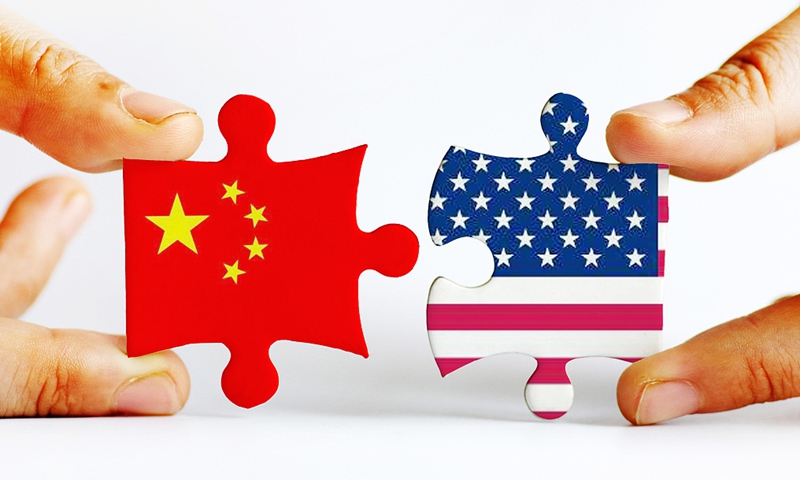
Working out ways to live with each other becomes the only long term viable option. In order to do that, one must balance the aspects. Thus, balancing expanding the nation’s power with not overextending it led to the strategic philosophy of stopping at China’s “natural” borders, then exerting influence (not control or conquest) via trade such as the Silk Road.
One other major arena where the balance of aspects was critical was in domestic affairs. When a society is functioning at its best, different aspects of society are in balance and working in harmony with each other. When aspects of a society become out of balance or in conflict with each other, society begins to become dysfunctional, and if the imbalances increase, society risks breakdown and possible collapse. One aspect of balance requires particular mention.
China’s cycles of strong dynasties gradually declining, becoming weak, collapsing, followed by a period of warring states, and followed by one strong state rising again, was well noted by Chinese society. It is common knowledge that when the gap between the rich and the rest of the population becomes too great, society is in jeopardy, and that corruption increases both the gap and the dysfunction of society. The key was in maintaining a healthy and functional balance between wealth in social classes and not allowing extremes to destabilize the country.
American leaders would do well to take note of this, as these are critical dynamics in any society. Likewise, American leaders would do well to consider the balance of aspects in a wide range of elements in our society. The ideological battle between those who believe in pure socialism vs. those who believe in pure capitalism, or government vs. private enterprise, might consider the possibility that both are vital elements of society, that the balance of the two should be decided on a functional rather than an ideological basis, and that like Yin and Yang, society works best when the two elements are viewed and managed as complementary rather than antagonistic forces. The word “harmony” appears often in practical Chinese discussions.
The alternative is bleak: If America continues without these essential concepts, we will continue to play the “Zero Sum Game,” which given our modern nuclear weapons and our destruction of the environment, will logically lead to the end of mankind. Again, “Zero Sum” is a loser’s game — and if the militarily most powerful nation on earth continues to follow it, all of humankind will lose.
The West fears China because they know that China has always been there, while Western empires have come and gone. But the West doesn’t really understand why, and hasn’t made an effort to understand. Instead the West continues to hold on to it’s concept of the “Zero Sum Game,” believing that this is the only possible paradigm, and thus fears China.
What the West doesn’t understand is that China’s basic strategy of “Build and Hold” means that China will not overextend itself, and thus needs America in our hemisphere and Europe in theirs, to continue to be strong and maintain stability in our parts of the world. We are the biggest economy in the New World, they are the biggest economy in the Old World. We are old and new, East and West, Yin and Yang to each other.
In other words, China needs us, and we need China. China is the central player in Asia, America is the central player here, Europe is the central player in their region, and other large nations are the central players in their regions. China knows that it would be self-defeating in the long run to try to control the world in the way that Western powers have, and China will not try. Each of the large nations need each other to maintain balance and security in the world, and China knows this. We need to learn this, because in the long game, this is a matter of life or death for our civilization and the world. The “Zero Sum Game” is the way of death. “Build and Hold” is the way of life.
A balanced, multi-polar world is what China will push for, and what all of our nations should strive for. Only this is sustainable. If we follow this central concept, then America can indeed survive and thrive for 5,000 years, and have a bright future as one of the world’s permanent leading nations. The future is ours to choose. Let us choose wisely.
Michael Wong is the vice president of Veterans For Peace, Chapter 69, San Francisco, and a retired social worker with a Master of Social Work degree. He is published in the anthologies, Veterans of War, Veterans of Peace, edited by Maxine Hong Kingston, and Waging Peace in Vietnam, edited by Ron Carver, David Cortright, and Barbara Doherty. He also appeared in the documentary Sir! No Sir! about the GI resistance to the Vietnam War. This piece was originally published at peacepivot.org
Resources:
“The US is Set on a Path to War with China. What Is to be Done?” by K. J. Noh.
K. J. Noh is a South Korean Army veteran, member of Veterans For Peace (VFP), member of the VFP China Working Group, a cofounder of Pivot To Peace, a scholar of Asian affairs, a journalist, and a political analyst, writer, and teacher specializing in the geopolitics of the Asia-Pacific region, published in Asia Times, CounterPunch.org, LA Progressive, Pivot To Peace, and radio commentator on KPFA and The Critical Hour. Here he gives an in-depth analysis of the larger dynamics behind the US Cold War against China:
Stark contradiction at root of US-China conflict, by Dr. John Walsh.
The United States is currently engaging in a Cold War on China using information warfare (propaganda), economic war, and military preparations for hot war which began with Obama’s “Pivot To Asia” moving 60% of US naval forces there, and continued through the Trump and Biden administrations, revamping our Navy, Marines, Army, and Air Force for “great power competition” as well as starting the new Space Force. But why is the US doing all this? Dr. John Walsh answers this question clearly and succinctly. Dr. Walsh is a retired medical researcher and now writes about issues of war, peace, empire, and healthcare for Asia Times, Antiwar.com, Consortium News, Dissident Voice.org and other outlets. He is a member of Veterans For Peace and the VFP China Working Group.
Eric X. Li: A tale of two political systems. A 20-minute TED talk by Eric Li, who grew up in the Chinese Cultural Revolution, later went to the University of California and became a hippie, then returned to Shanghai and became a highly successful entrepreneur. He discusses the differences between America’s two party system and China’s one party system, explaining why and how each system works for each country, and why different systems may be appropriate for different countries, breaking mutual stereotypes along the way:
China Reconnects: Joining a Deep-Rooted Past to a New World Order, by Wang Gungwu: This small book gives an overview of China’s modern history and its current reconnection to its ancient past. This is rather heavy reading intended for scholars, but if you want to understand what China is currently doing, this is a highly recommended book. Wang Gungwu is a university professor at the National University of Singapore and Professor Emeritus of the Australian National University. He was formerly the Vice Chancellor of the University of Hong Kong from 1986 to 1995 (when Hong Kong was still under the British). Singapore is a neutral country, so their view of China is about as objective as any you will find, certainly much more accurate and objective than most Western media.
Professor Kishore Mahbubani describes China’s ancient history of rejecting global imperial ambitions: Kishore Mahbubani is a Singaporean academic and former diplomat who served as Singapore’s Permanent Representative to the United Nations and held the position of President of the United Nations Security Council between January 2001 and May 2002.He later served as Dean of the National University of Singapore‘s (NUS) Lee Kuan Yew School of Public Policy
Destined For War: Can America and China Escape Thucydides’s Trap? by Graham Allison, 2017, published by Houghton Mifflin Harcourt, Boston — New York. Dr. Graham Allison was the founding dean of the Harvard Kennedy School, and an assistant secretary of defense and advised the secretaries of defense under every president from Reagan to Obama. He presents a clear Western explanation of the “Zero Sum Game” and the grave dangers inherent in continuing to play it today with modern weapons, including outlining specific scenarios with China that could lead to nuclear war, intended or not. He also gives alternatives to the “Zero Sum Game” that could lead to peace.
The Doomsday Machine: Confessions of a Nuclear War Planner. by Daniel Ellsberg, 2017, published by Bloomsbury, New York. Daniel Ellsberg, famous for leaking the “Pentagon Papers” during the Viet Nam war, reveals that in addition to doing top-secret work for RAND on Viet Nam, he was also doing top secret work on nuclear war for RAND and the US Air Force. He takes us from the highest levels of nuclear war planning to distant airfields from which nuclear bombers would be launched, how on numerous occasions we came within a hair of actual nuclear war, and how we continue to be at such risk now.
Daniel Ellsberg has also recently released news of a previous planned nuclear attack on China over Taiwan that continues to be a danger now, see the article “WHY DANIEL ELLSBERG WANTS THE US TO PROSECUTE HIM UNDER THE ESPIONAGE ACT”
China Condensed: 5000 Years of history and culture, by Dr. Ong Siew Chey, 2008, Marshall Cavendish International, Singapore. This is a brief introduction to China’s history and culture for first time readers of the subject.
From Yao to Mao: 5000 Years of Chinese History: Kenneth J. Hammond, Phd Professor, New Mexico State University. Dr. Hammond lived and studied in China for over a decade, holds graduate degrees East Asian Regional Studies and East Asian Languages from Harvard University, and is a professor at New Mexico State University. This is an in-depth 18-hour course on Chinese history from its very beginnings 5,000 years ago to now.
A Summary of the United States 2018 National Defense Strategy
“Capitalism on a Ventilator” edited by Sara Flounders and Lee Siu Hin. Covid-19 is a pandemic that has rocked our world, and the US government and mainstream media have gone all out to blame China for this virus. But in a book that establishment publishers declined to publish, editors Sara Flounders and Lee Siu Hin have compiled 55 chapters of incredible scientific data, clear arguments, new information and a time-line that unfolds in real time, as the pandemic spreads, that bring you the facts and truths that the establishment doesn’t want you to know. Authors in this anthology include Ajamu Baraka, Monica Moorehead, Mumia Abu Jamal, Margaret Kimberley, Vijay Prishad, Lee Siu Hin, Sara Flounders, Carlos Martinez, Kevin Zeese, Deirdre Griswold, Max Blumenthal, Dr. John Walsh, and others.
Posted in accordance with Title 17, Section 107, US Code, for noncommercial, educational purposes